Avoid These Common Construction Mistakes to Build With Confidence
Keep projects on track and profits where you want them, by knowing what to watch out for

You start a project with the best intentions that the work will be completed on time, within the budget and safely. But intentions alone won’t guarantee those outcomes, and making the biggest construction mistakes (or even some smaller ones) can leave your business open to unhappy clients, bad reviews, profit loss and, in some cases, even lawsuits. Here we’ll describe many common construction mistakes and how to avoid them, both in terms of running the business itself and doing the actual work, so you’ll have the knowledge to protect your projects and your business.
Click on a link below to jump straight to the section you're most interested in:
- Free E-Book: Avoid These Common Construction Mistakes to Build With Confidence
- How is a construction mistake defined?
- 10 common construction business mistakes
- 18 common construction work mistakes
- Consequences of common construction mistakes
- How to avoid common construction mistakes
Included in the Houzz Pro e-book below is advice from Mark Richardson, whose insight is based on more than 30 years of experience as an advisor, an author, a national speaker and the former co-chairman of Case Design/Remodel and Case Handyman Services. Download it now.
What Is a Mistake?
Mistakes are roadblocks that keep you from where you want to go, Richardson says. And in the remodeling industry, they can have dramatic financial repercussions. In fact, one remodeler friend of Richardson’s once told him, “If I only had my money back on the mistakes I made in my remodeling business, I would never have to work again.”
And while mistakes are easy to spot in hindsight, it’s helpful to identify the types ahead of time so you can avoid them going forward. Richardson offers the following examples:
- Dysfunctional processes
- Not thinking things through
- Taking your eye off the ball
- Saying the wrong thing
- Reacting/responding unskillfully
- Wasting time
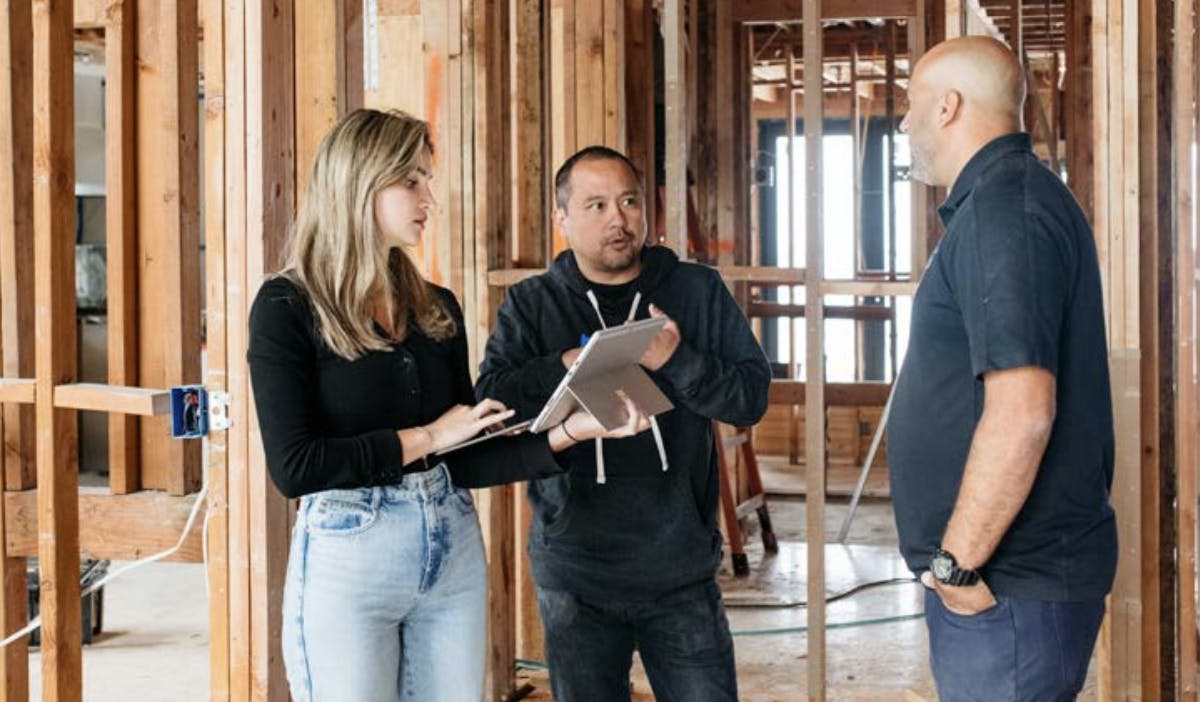
10 Most Common Construction Business Mistakes
We’ll get to the most common work construction mistakes below. But Richardson offers these that you can apply to your construction business from a management and ownership perspective.
- Failure to plan. Planning gives you a road map that allows you to enjoy the journey. Make time on a regular basis (quarterly, yearly, every five years) to plan for where you want your business to be and how you’re going to get it there. This involves monitoring and adjusting as you go; don’t set it in stone.
- Chasing shiny objects. As a business owner, you have an entrepreneurial spirit and a passion for what you do. This can lead to heading down paths that look attractive in the moment but don’t really serve your business goals. Find your “sweet spot,” Richardson advises. Determine what you’re really good at in terms of type of project, location and demographic, and remain laser-focused and committed to that. That means gracefully saying no when necessary.
- Slowing down or stopping marketing efforts. Keep your marketing efforts consistent to help keep your work supply consistent, rather than ramping up your efforts when work is slow. Consider it an investment rather than an expense. A marketing budget of about 2% to 5% of the overall budget is generally reasonable for most construction firms, Richardson says. And be sure to leverage technology (social media, digital platforms, etc.) for your marketing efforts.
- Not knowing your numbers. While you might not naturally be numbers-oriented, knowing numbers doesn’t have to be super hard. Learn the key numbers for your business — for instance, what do you have to hit on a yearly basis, not just to keep your door open but to make the effort worth it? Numbers also come into play with timelines. Try to keep everything simple so you can stay focused on the result.
- Working for the wrong client. Develop a checklist for the qualities of the right client for you, so you can make a profit and enjoy the process as well. For instance, will the clients allow you to control the process? Will they value your professional advice? Do they have realistic expectations?
- “Whale hunting.” This refers to chasing big clients. Big isn’t necessarily better, Richardson says. In fact, it can sink the boat, so to speak. You can refer big clients to better-suited firms or even local builders’ organizations.
- Overpromising. One of Richardon’s mottos is “Always exceed expectations.” Putting this into practice will help you build credibility and trust.Train your team about what exactly it looks like for your firm to exceed expectations, and have the courage to say no to clients when necessary.
- Allowing the client to control the process. You’re the pro, but the clients are the hosts. Learn how to master setting agendas, from the initial meeting to all subsequent steps. Gracefully saying no comes into play here again as well.
- Hiring the wrong people and keeping people too long. Team members are either assets or liabilities. Are they contributing positively to the business and client experiences? Can they do the job, will they do the job, and do they fit personality-wise? If the answers are yes, they’re probably worth hiring or keeping. Think about your return on energy (ROE), not just your return on investment (ROI).
- Growing too fast. Seek the right cadence, rather than just shooting for growth as quickly as possible. “If you’re not growing, you’re dying,” Richardson says. But growing too fast can endanger the health of your business and your own mental health. The key is to grow about 10% to 20% per year.
Putting these into place might require substantial changes and might not be easy, but consider Richardson’s overall philosophy about businesses: “change or become irrelevant.” Continually staying the same is not an option if you want to achieve success.

18 Most Common Construction Work Mistakes
You don’t have to avoid every single one of these to improve your business. “If all you do is reduce or avoid some of them, you will make more money, you will be happier, [and] you will be less stressed,” Richardson says.
- Rushing through pre-construction. While you might be eager to get to the actual build, skipping any steps before that can cause problems down the road. For instance, hastily putting together estimates, contracts, insurance contracts and other paperwork might mean exposing your business to financial risk if material quantities need to be adjusted, the scope of work changes, a subcontractor gets injured and so on. And if you don’t get the proper permits, you’ll be on the wrong side of the city planning agency and put inspections in jeopardy.
- Poor design. If your design has errors, they certainly will show up during construction. And this will result in potentially costly change orders, the need to redesign on the fly, missed deadlines, potential loss of subcontractors due to scheduling conflicts and more.
- Improper foundation prep. No one wants a foundation that ends up cracking or sinking, which can put the whole project in jeopardy. This might be one of the most expensive construction mistakes out there, especially if it becomes apparent after the rest of the work is completed. And nor handling it can result in dire and even deadly circumstances.
- Poorly installed insulation. Envelopes have been getting tighter over the years, thanks to better building techniques and higher-quality insulation materials. No matter what material you choose, however, not installing it properly can lead to money-draining energy leaks and even weather damage where it isn’t easily fixable.
- Faulty electrical wiring. Even though it’s a hidden element, electrical wiring that isn’t installed properly can cause all kinds of problems, from overloads and power outages to the risk of fire. It also can cause a project to fail inspection.
- Incorrect framing. Framing is the skeleton of a home or another building, and is crucial for structural stability. If the framing is faulty, the home won’t be able to properly support the weight of the walls of the roof, leading to potential collapse. This is another one of those expensive construction mistakes, because redoing the framing involves considerable time and effort.
- Improperly installed plumbing. If drain and supply lines aren’t put in correctly from the rough-in stage, leaks can occur—and not just of clean water but of sewage as well. Plumbing fixtures such as faucets also must be installed correctly to avoid leaks and other issues.
- Inadequate ventilation. Even everyday cooking can result in unhealthy air quality within the home. A means of exhaust must be present so there can be adequate ventilation of both unhealthy airborne contaminants (such as in the kitchen) and moisture (such as in the bath). This can be in the form of windows or an exhaust system.
- Misaligned doors and windows. While this might seem like more of a cosmetic issue, misaligned doors and windows can result in more practical issues as well, such as leaks and the inability to close and open them properly or easily.
- Poorly installed roofing. Depending on the material used, a roof is meant to last at least 15 to 30 years. But no matter what material you use, not installing it correctly—especially the waterproofing underlayment—can lead to early deterioration. And that in turn can lead not just to an aesthetic issue but to leaks, mold, pest and pollen invasions, and more.
- Lack of permits and inspections. Every reputable, licensed building company should already be avoiding this common construction mistake of many DIYers. For one thing, planning agencies in many cities can shut down a project if they find out the correct permits haven’t been pulled. For another, not getting the proper permits and passing inspections can mean safety issues have been overlooked. Also, for the homeowner, resale value can be drastically affected if the home hasn’t been built to code.
- Lack of subcontractor insurance and contracts. Any problems that can’t be settled tend to result in lawsuits. And if your subcontractor contracts are lacking or incomplete, that exposes you to financial responsibility for those lawsuits even if you didn’t perform the actual work. Similarly, if workers get injured on the job, insurance will protect you from personal financial responsibility.
- Failing to fully define project milestones. While this isn’t necessarily one of the biggest construction mistakes, not defining (and therefore subsequently not hitting) project milestones can throw the entire schedule off and result in delayed project completion. It can also result in not having the materials and products you need when you need them.
- Not scheduling safety training. Basic safety protocols provided by the Occupational Safety and Health Administration should be reviewed with all subcontractors before the project begins. This will help prevent accidents from small ones to tragedies.
- Labor issues. Whether it’s hiring the wrong people, not scheduling the crew properly, not keeping workers safe and hydrated, or not being able to hire everyone you need to complete the project, labor issues can derail a project—you might even need to redo work if it isn’t up to your standards. As such, they’re one of the biggest construction mistakes you can make. Plan early and well to avoid them.
- Overscheduling. Taking on too many projects at once can lead to quality issues as well as unnecessary stress for you and your team. Consider each project and its proposed timeline carefully before signing on the dotted line.
- Over- or underestimating costs. Inaccurate estimates aren’t ideal no matter which direction the inaccuracy leans toward. Overestimating makes you look unprofessional and can annoy clients, or even make you lose bids, while underestimating can mean shelling out for things out of pocket, which cuts into profits. One of the best ways to avoid this is by using software that has a takeoffs tool, estimating templates, and built-in cost databases, such as Houzz Pro.
Heidi Clark, owner of Clark Builders, advises construction business owners to know their worth: “I would say the number one mistake people make is underestimating their worth,” she says. “I know a fellow contractor who was struggling, so I reviewed their estimates and saw they weren’t charging nearly enough. If you’re good, you deserve what you’re asking for.”
18. Relying on manual back-of-house processes. Whether you’re calculating materials needed or filling in spreadsheets with supplies needed, doing things manually leaves too much room for human error. Use construction management software wherever possible, both to automate calculations and processes and to make admin easier on yourself.
Consequences of Common Construction Mistakes
While we’ve mentioned consequences with the construction mistakes listed above, there are general ones as well, such as:
Safety hazards. Not paying attention to safety protocols and not communicating them to your team can result in both minor and major injuries. Protect your workers—and your business—by holding a pre-project safety training and performing regular safety inspections.
Structural damage. Improperly laid foundations, shoddy framing, roofing shortcuts, design issues and more can lead to structural damage and even collapse. Make sure every structural element is built to code and built properly.
Energy inefficiency. While you might not be around when this becomes apparent, the client certainly will—and won’t be pleased to have sky-high utility bills. Plus, energy inefficiency—from things like improperly installed installation or incorrectly hung windows—is detrimental to the planet and its limited resources.
Moisture and mold. Lack of adequate ventilation and improperly installed plumbing systems can create a buildup of moisture that eventually leads to mildew and mold, which can be a health hazard in addition to being unsightly.
Code violations. Not building to code can lead to a failed inspection, safety hazards, and lowered home resale value, not to mention unhappy clients.
Costly repairs and added work. Having to redo any aspect of a project takes time, effort and money. Whether you hired someone who lacked the right skills or the design was adjusted incorrectly on the fly by someone else, ultimately you as the business owner are responsible for satisfactorily completing the work.
Burnout. Overscheduling in terms of daily work on one project or too many projects overall can leave you and your staff burned out. And this can lead to less focus and attention, potentially resulting in injuries as well as stressed-out workers.
Poor client experiences and reviews. Positive reviews are essential to getting referrals and repeat business. And making too many small construction mistakes or one big mistake can mean saying goodbye to those, putting your reputation and your income in jeopardy.
Cost overruns. If the budget goes bust due to change orders, that’s one thing. But if you’re on the hook because of poor scheduling or other aspects of project management, your bottom line can suffer. Tip: Utilize project management tools designed with construction pros in mind.
Legal disputes. When issues with clients or subcontractors can’t be solved through normal channels or mediation, lawsuits are the next step. And even if you win, you’ll spend time and (potentially lots of) money defending your business.
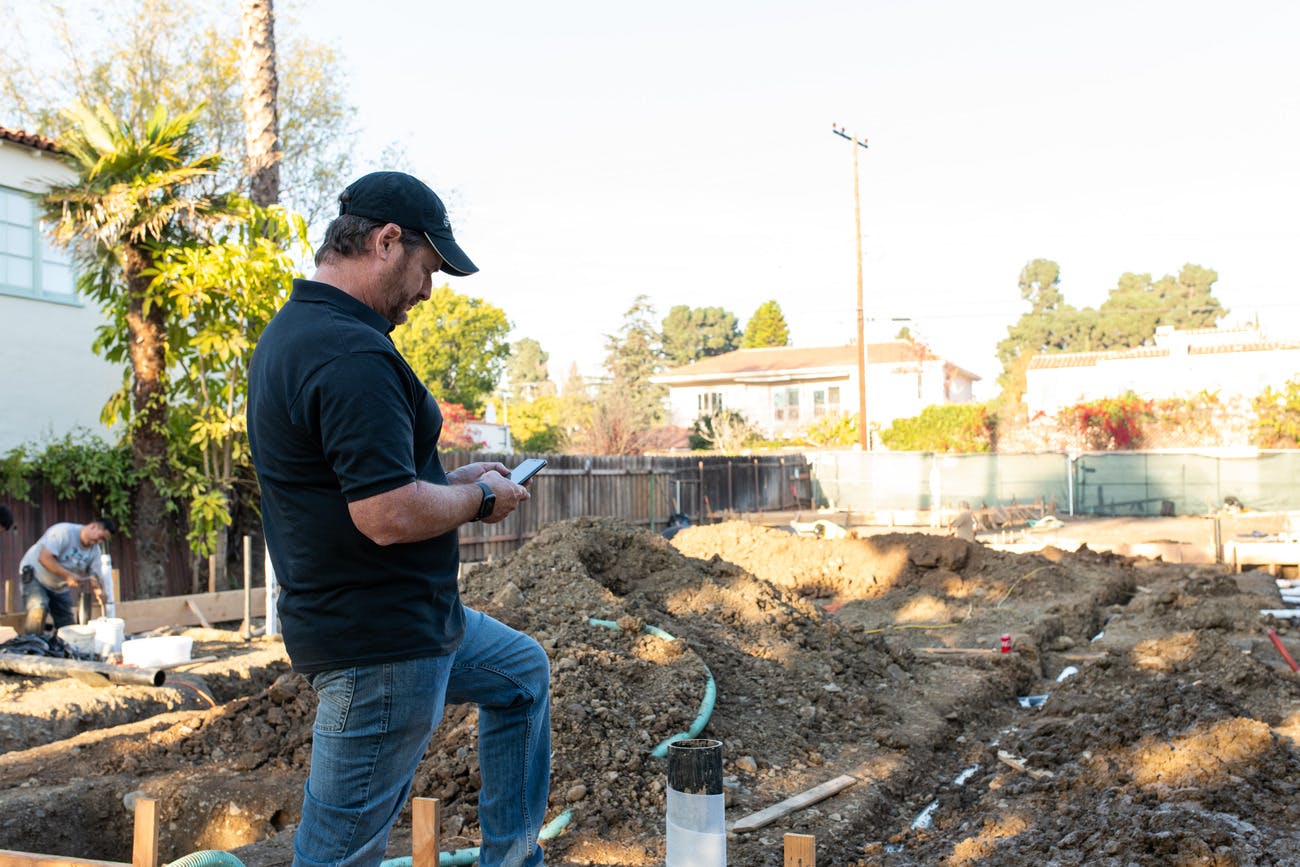
How to Avoid Some of the Biggest Construction Mistakes
Now that you know some of the most common construction mistakes and what the consequences are, let’s discuss how to avoid them.
Have a solid contract in place. This is the best way to avoid legal disputes. Make sure it includes contingencies for things like change orders or delays as well as the usual sections related to the scope of work, payment terms and so on. Download our free construction contract template, then learn how to write a residential scope of work.
Hire licensed and qualified professionals. While it might be tempting to turn to lesser-skilled or unlicensed subcontractors for financial or scheduling reasons, it’s worth it to get the best pros for the job. This way you can better avoid having to redo any work, and you can be more certain of quality. If your roster of pros is short, consider networking to find more people to add to it.
Conduct thorough inspections and tests. This will help you catch any minor problems before they become major ones. And this is in addition to inspections conducted by your local building department.
Follow building codes and regulations. Not only will this help ensure that everything works the way it’s supposed to and is as safe as possible, but it will help preserve the home’s resale value.
Use quality materials and tools. The effects of cutting corners with materials can be a reduction in longevity and other issues, and poor-quality tools can be a safety hazard.
Streamline communication with all parties. Keeping both clients and your teammates in the loop will help avoid miscommunication that can lead to errors. Consider streamlining it with the help of construction collaboration software.
Document everything that happens on the jobsite. Having a record keeps things transparent and gives you something to refer to in the event of any disagreements. Learn how to write a daily log and get a free log template.
Adopt automation to reduce manual errors. Software such as Houzz Pro makes calculations for you and offers templates that come pre-populated with line items. You can also learn about change orders and invoicing along with free templates.
Create accurate takeoffs for accurate budgeting. Inaccuracies in estimating can lead to expensive construction mistakes, and it all starts with takeoffs. Find out everything you need to know about creating takeoffs and get the full scoop on building accurate budgets. Once you’ve got those down pat, discover how to create professional construction bids.
Take ownership of any mistakes. Trying to sweep problems under the rug can cause further issues down the road, both in terms of the scope of work and the client’s trust. Figure out the responsible party quickly so you don’t waste time and cause delays, and then allow them to fix it. If you’re the one responsible, admit it, fix it and move on.
Geraldine Smith of All Inclusive Construction oversees her team’s efforts to do right by their customers. “You have to make sure you’re on top of your people and checking on the work, because I don’t let work go if it’s not done right,” she says. “There have been a few times, whether it was an employee or a sub, where we didn’t check on them frequently enough, and we went back, inspected things, and said, ‘This does not meet our quality, so rip it out, redo it.’ That’s coming out of my pocket, but I’d rather take that money out of my pocket and give the customer a quality job than let something go that’s not up to our standards.”
Conclusion
While every construction project involves a certain amount of unpredictability and the potential for mistakes, following all the advice in this guide can help you avoid the biggest construction mistakes that can have serious consequences. And we can’t stress enough the importance of dedicated software to help reduce the chance of errors from the get-go. Try Houzz Pro free and see how it can help you automate tasks, improve communication and manage projects more smoothly.
Disclaimer: The information contained in this article should not be relied upon as legal, business, or tax advice. We encourage you to seek guidance from your legal counsel, business or tax specialist with regard to how the information contained in this article may or may not apply specifically to your business.

Want advice delivered to your inbox?
Unlock industry insights and updates for contractors and design pros
By signing up, I agree to the Houzz Terms of Use and Privacy Policy and that Houzz may use my information to contact me about relevant content, products, and services.




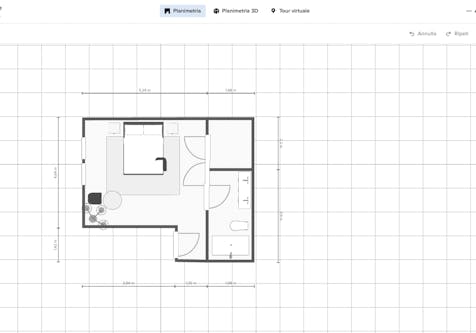

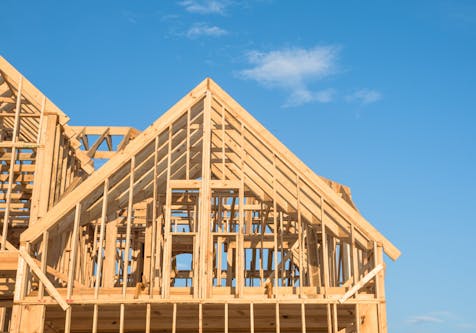




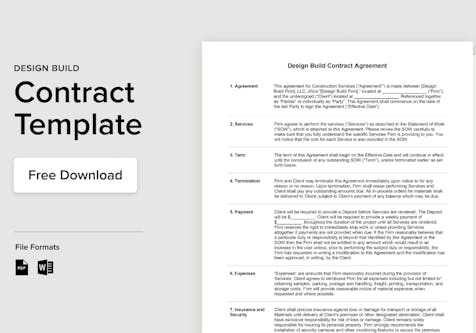
Join the conversation by commenting or asking a question below. The Houzz team reads every single comment, and we’ll get back to you by email if you need us!